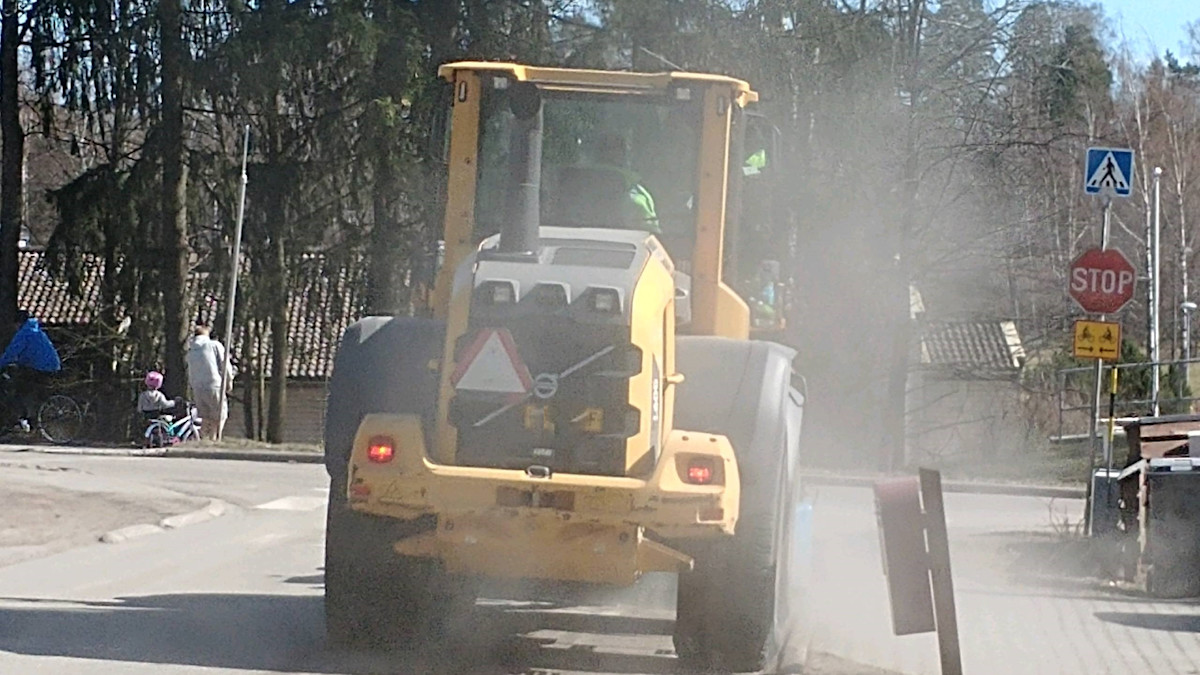Street dust
Street dust in springtime is a recurring problem in Finland because sand and studded tires are used to reduce the slippery conditions of streets during the winter.

During winters, the spreading of sand or salt onto roads in Finland helps reduce the slippery conditions of streets. Dust particles are released into the air in the spring, when snow and ice have melted and streets have dried. Street dust can easily be stirred up into the atmosphere in dry weather. Especially gusty winds and heavy vehicles can lift dust efficiently from unclean roads. The peak in street dust emissions has usually been at the end of March or at the beginning of April in Finland, but the peak can sometimes be later than that as a consequence of a snowy winter.
Rains will help
During spring, long frost periods can even prevent moistening of the streets which is the most effective way of binding dust. Naturally wet conditions, as well as snow and ice, prevent dust emissions from street surfaces rising into the air. Usually street dust periods will end when streets have been cleaned and following that, rains have flushed fine particles of dust away. Concentrations of small particles have increased especially during springtime (March, April and May) after the snow has melted, but also during end of the year (November and December) when road sanding usually begins, but roads are not yet fully covered by snow and ice.
Traffic have an influence on air quality
Street dust episodes do not result only from weather conditions, but also from the quality of the road surface and traffic, both of which have an influence on air quality. In addition to small particles formed due to road sanding materials, there can be other sources of street dust like dust particles from tires, vehicle brakes and exhaust gases as well. The dustiest areas are busy road and street sections during rush hours.
Air pollution particles
The sizes of particles are usually described in microns, a metric unit of measure where one micron is one-millionth of a meter. Outdoor air pollution particles are currently divided into three or four classes based on their size.
Large particles – consists of particles with a diameter larger than 10 micrometers
Coarse particles - consists of particles with a diameter between 2.5 and 10 micrometers
Fine particles - consists of particles with a diameter less than 2.5 micrometers
Ultrafine particles - consist of particles with a diameter smaller than 0.1 micrometers
